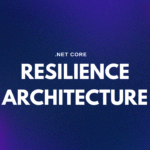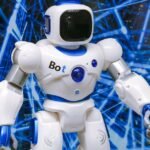A decade ago, automation meant Jenkins jobs that ran your tests at night.
Five years ago, it meant CI/CD pipelines that deployed every commit.
Today, we’re quietly stepping into something different — codebases that evolve themselves, guided not just by scripts but by bots that can read, reason, and act.
Welcome to the era of Bot-Driven Development.
From Assistants to Autonomous Colleagues
If you’ve been around software long enough, you’ve seen our relationship with automation shift.
We started by automating repetitive work. Then we automated processes.
Now, we’re automating decisions.
Tools like GitHub Copilot, Cody, and CodeWhisperer can already write code, suggest refactors, and generate tests.
But this is just the surface.
The real wave is coming from bots that operate as independent agents within the software lifecycle — Dependabot, Renovate, Mergify, AutoPR, and even AI-driven security bots that patch vulnerabilities before anyone files a ticket.
These aren’t assistants. They’re coworkers — quiet, tireless, slightly over-enthusiastic — who never forget to lint, update dependencies, or test your edge cases.
What Exactly Is Bot-Driven Development?
Think of bot-driven development as the next evolutionary layer over DevOps.
It’s a world where:
(a) Bots monitor your codebase continuously
(b) Detect issues (outdated dependencies, vulnerabilities, test gaps)
(c) Propose and even merge fixes autonomously
(d) Trigger CI/CD workflows (e) Learn from your feedback and improve over time
(e) Developers move from managing code to managing ecosystems of bots that manage code.
It’s the same shift we saw in cloud infrastructure — from hand-deploying servers to describing infrastructure as code.
Now, we’re starting to describe development itself as an orchestrated network of intelligent agents.
A Real-World Glimpse
Last year, our team integrated RenovateBot to handle dependency updates.
Simple enough, right?
But within weeks, the bot had opened hundreds of pull requests — all neatly tested, tagged, and ready for review.
We started noticing how much mental noise disappeared.
No more “What version of Express are we on?” discussions.
No more forgotten patches.
Then we added a GitHub Actions bot to automatically close stale PRs, tag reviewers, and label issues.
Our board became lighter.
Developers spent less time maintaining the process and more time building things that actually mattered.
That’s when I realized:
We weren’t writing more code — we were delegating more responsibility to code.
The Human Side of the Equation
And here’s where it gets interesting.
When bots handle your routine work, your daily rhythm as a developer changes.
You start each day not with a blank editor, but with suggestions waiting for review:
a refactor proposed by an AI, a dependency bump by Renovate, a CI fix recommended by a pipeline bot.
You shift from authoring to curating — guiding systems that are gradually learning how to build alongside you.
Some developers love it.
Others find it unnerving.
Because it raises a very real question:
“If the bots are coding, what’s left for us?”
My answer is simple: the same thing that’s always been left — judgment, creativity, and context.
Bots can mimic logic. They can optimize syntax. But they can’t yet feel the why behind a feature or sense when a technical debt tradeoff is worth it.
The human role isn’t disappearing. It’s evolving.
Challenges and Boundaries
Autonomous bots bring as many new challenges as they solve:
Trust: Can we safely let a bot merge to main?
Security: Who audits the bot’s actions? What if it introduces a vulnerability?
Coordination: What happens when two bots try to edit the same file? (Yes, it happens.)
Explainability: Why did the AI decide to refactor that code?
The future of bot-driven development isn’t about blind automation.
It’s about governed autonomy — human-in-the-loop workflows where bots act confidently but are always accountable.
We’ll need dashboards for bot behavior, policies for bot permissions, and maybe even bot ethics guidelines someday.
Because once bots start “writing code,” they’re no longer tools. They’re actors in the system.
Looking Ahead
If you squint a little, you can already see where this is heading:
Multi-agent systems that collaborate on different parts of a codebase
Bots that negotiate pull requests with each other (“I’ll merge yours if you fix that test”)
Codebases that self-heal based on production telemetry
Development environments that evolve continuously, without waiting for a sprint cycle
It’s both thrilling and humbling.
Software is becoming not just something we build — but something that builds with us.
A Thought to Leave You With
As a developer with a decade in the trenches, I’ve learned one truth:
Every time we automate something, we redefine what it means to be a developer.
Bot-driven development won’t replace us — it will force us to level up.
We’ll spend less time on syntax, more on systems.
Less on “how,” more on “why.”
And maybe, just maybe, we’ll find ourselves building not just better software — but better ways for software to build itself.
So next time a bot opens a pull request in your repo, don’t roll your eyes.
That’s not just automation.
That’s evolution — knocking gently on your GitHub notifications.








